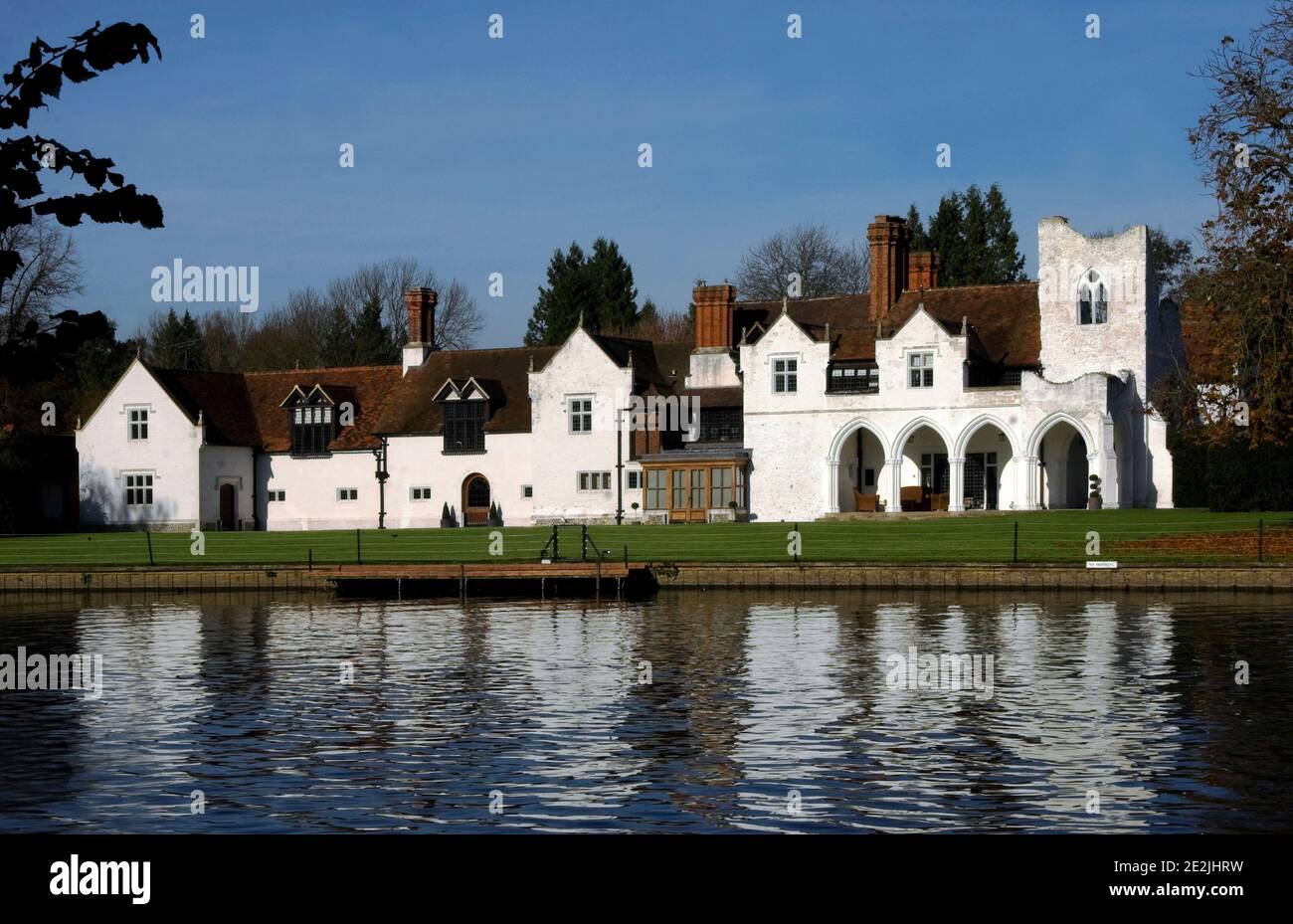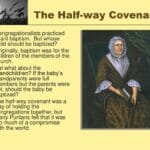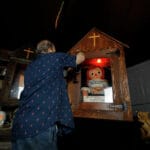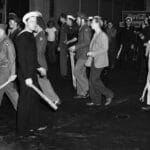Prepare to venture into the mysterious world of the Monks of Medmenham, a secret society that scandalized 18th-century England. Often associated with the notorious Hellfire Club, the Monks of Medmenham were known for their controversial gatherings at the ruins of Medmenham Abbey. But were they truly a society of hedonists dedicated to excess, or was there something more to their enigmatic brotherhood? This article delves into the history, membership, and legacy of the Monks of Medmenham, separating fact from fiction to uncover the truth behind the legends.
From Abbey to Playground: The Rise of the Medmenham Monks
The story of the Monks of Medmenham begins not with scandalous gatherings, but with the peaceful existence of Medmenham Abbey itself. Founded in the 12th century, the abbey initially served as a relatively modest Cistercian monastery. However, its tranquil existence came to an end in 1547 with the Dissolution of the Monasteries under King Henry VIII. The abbey was seized and eventually sold to the Duffield family, under whose ownership the once-grand structure fell into disrepair. This decline into ruin set the stage for the abbey’s next chapter – one far removed from its monastic origins.
In the mid-18th century, the abbey’s secluded location and air of faded grandeur attracted the attention of Sir Francis Dashwood, a flamboyant aristocrat with a penchant for the unconventional. Known for his eccentricities and fascination with secret societies, Dashwood sought to create a space where he and his circle of like-minded companions could indulge in intellectual pursuits, mock societal norms, and engage in behavior deemed scandalous by polite society. Thus, around 1755, the “Monks of Medmenham” were born.
Brothers in Excess? Unraveling the Mysteries of Membership and Activities
The Monks of Medmenham were not monks in the traditional sense. Instead, they were a select group of men drawn from the upper echelons of British society, brought together by Dashwood’s charisma and shared desire for a space free from societal constraints. While the complete list of members remains a subject of debate, some notable figures are consistently linked to the group.
Notable Figures Among the “Monks”:
- Sir Francis Dashwood: The founder and driving force behind the group, Dashwood’s wealth and influence provided the foundation for the Monks’ activities.
- John Wilkes: A radical journalist, politician, and close friend of Dashwood, Wilkes was known for his sharp wit and challenges to authority, reflecting the intellectual spirit that likely permeated the Monks’ gatherings.
- Paul Whitehead: A poet known for his satirical verses that mocked the establishment and celebrated the pleasures of the flesh, Whitehead’s presence suggests an appreciation for art and literature within the group.
- The Earl of Sandwich: A prominent politician often associated with the Monks, the Earl of Sandwich embodies the intersection of political power and social indulgence that characterized the group.
Rumors persist of other influential figures gracing the halls of Medmenham Abbey, with Benjamin Franklin even rumored to have been a guest. However, concrete evidence remains elusive, adding to the mystique surrounding the Monks’ activities. This lack of clarity is exacerbated by the deliberate destruction of documents and artifacts associated with the group, most likely an attempt to protect their reputations and avoid further scandal after the group’s disbandment in 1763.
Because of this, piecing together the Monks’ activities is a challenging task for historians. While accounts from the period often focus on tales of debauchery, including mock religious ceremonies, excessive drinking, and sexual promiscuity, these accounts are often fueled by hearsay and societal anxieties surrounding the group’s secrecy. It is likely that the truth lies somewhere between these scandalous narratives and the intellectual pursuits hinted at by the presence of individuals like Wilkes and Whitehead.
Beyond Debauchery: The Intellectual Side of the Monks
To dismiss the Monks of Medmenham as solely a group of hedonistic revelers would be a simplification. The 18th century was the Age of Enlightenment, a period marked by intellectual curiosity, skepticism towards traditional authority, and a thirst for knowledge. It is highly probable that the Monks, many of whom were educated and politically engaged individuals, used their gatherings at Medmenham Abbey as a space not only for indulgence but also for intellectual discourse.
The abbey’s dilapidated state may have been a deliberate choice, serving as a symbolic backdrop for their rejection of traditional societal structures and religious hypocrisy. Within the crumbling walls of a former monastery, they were free to discuss radical ideas, challenge established norms, and explore alternative philosophies. The “Monks” likely engaged in debates on politics, religion, and philosophy, their discussions fueled by wine and fueled by a shared desire to understand the world around them.
The Hellfire Connection: Separating Fact from Legend
The Monks of Medmenham are frequently linked with the infamous Hellfire Club, a term often used to describe various 18th-century social clubs associated with rumors of scandalous behavior and occult practices. This association, however, is a source of much historical confusion.
While the Monks of Medmenham shared some similarities with groups bearing the Hellfire Club moniker, including their exclusivity, air of secrecy, and challenges to societal norms, it is crucial to recognize them as distinct entities. The Monks operated independently, their activities centered around Medmenham Abbey and driven by Dashwood’s leadership. The conflation with the more widely known Hellfire Clubs, however, has undoubtedly contributed to the sensationalized narratives surrounding the Monks, making it difficult to discern truth from exaggeration.
A Legacy of Intrigue: The Enduring Mystery of the Medmenham Monks
Despite their relatively short existence, the Monks of Medmenham have secured a firm place in historical imagination. Their activities at Medmenham Abbey, shrouded in a mix of documented fact, salacious rumor, and deliberate secrecy, continue to fascinate and inspire debate centuries later.
The lack of concrete evidence has allowed for a proliferation of interpretations, ensuring that the Monks of Medmenham remain an enigma. Were they a group of social elites using the guise of monasticism to mask their hedonistic pursuits? Or were they a society of freethinkers engaging in intellectual debate, their scandalous reputation a byproduct of a society ill-equipped to understand their unconventional philosophies?
The answer, much like the ruins of Medmenham Abbey itself, holds fragments of truth obscured by time and speculation. What remains undeniable is the enduring legacy of the Monks of Medmenham, a testament to the power of secrecy, the allure of the forbidden, and the enduring human fascination with the mysteries of the past.
Does the Hellfire Club still exist?
The question of whether the Hellfire Club, or groups inspired by its legacy, still exist today is one that has captured the imagination for centuries. While the original Monks of Medmenham disbanded in 1763, the concept of a secret society operating outside the bounds of conventional morality holds a certain allure.
Whispers of modern-day groups carrying on the mantle of the Hellfire Club, engaging in similar rituals and wielding hidden influence, continue to circulate. However, concrete evidence supporting these claims remains elusive. The lack of verifiable proof does little to dampen the intrigue, fueled by the enduring human fascination with conspiracy and the possibility of powerful forces operating beyond the veil of public knowledge.
It is important to approach such claims with a healthy dose of skepticism. The enduring legacy of the Hellfire Club, both the historical reality and its fictionalized counterparts, has made it a convenient framework upon which to project modern anxieties about power, corruption, and the unknown.
While the existence of clandestine organizations engaging in illegal or morally reprehensible activities is a reality, attributing such actions to a direct lineage from 18th-century social clubs like the Hellfire Club is a leap that requires substantial evidence. The power of the legend, however, lies in its ability to spark debate, encourage critical thinking about power structures, and serve as a reminder that truth is often stranger than fiction.
How long is the Hellfire Club walk?
It’s interesting to note that while the term “Hellfire Club” is often associated with the Monks of Medmenham, there isn’t a specific walk directly tied to them. There are, however, several locations connected to the history of the club that offer captivating walks through history.
For example, you can visit the ruins of Medmenham Abbey, the site of the Monks’ infamous gatherings. While the abbey itself is privately owned, the surrounding woodlands offer scenic trails that evoke the air of mystery surrounding the Monks. Walking these paths, one can’t help but imagine the figures who once gathered there, their voices echoing through the centuries.
Additionally, West Wycombe Park, once owned by Sir Francis Dashwood, boasts beautiful grounds and intriguing follies like the Hellfire Caves. A stroll through this landscape offers glimpses into the tastes and eccentricities of the man who brought the Monks together. These walks, while not explicitly named after the Hellfire Club, offer a tangible connection to the history and intrigue surrounding this enigmatic group.
Discover an illustrious lineage that shaped the history of art and culture articulated in the grand architectural masterpiece, monumental 100.3. Immerse yourself in the enchanting world of muses and musings, where creativity finds solace and expression in musing muse.









